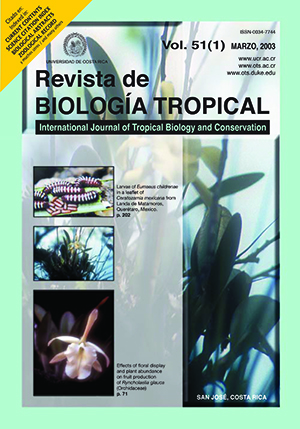Abstract
Drosophila gouveai is a cactophilic species endemic to South America. In southeast Brazil it is found on summits of isolated hills, which apparently are current refugia resulting from climatic changes during the Quaternary Period. It breeds only in necrotic cactus cladodes of Pilosocereus machrisii. Temporal differences in necrotic cactus availability could have a great impact upon D. gouveai population size, and could thus influence its evolutionary history. We analyzed the relationship between necrotic cactus availability and population size of D. gouveai. The fluctuation in the population size, variation in necrotic cactus availability and exploitation of this resouce by larvae were surveyed bimonthly for one year on a sandstone table hill in central-south Brazil. Temporal necrotic cactus availability did not vary significantly, though in June there was a moderate decrease. Larval populations were highest in October and December. The D. gouveai population size was highest in February and remained relatively stable the rest of the year. The observed fluctuation in population size was not a function of temporal necrotic cactus availability in quantitative terms.##plugins.facebook.comentarios##

This work is licensed under a Creative Commons Attribution 4.0 International License.
Copyright (c) 2003 Revista de Biología Tropical
Downloads
Download data is not yet available.


